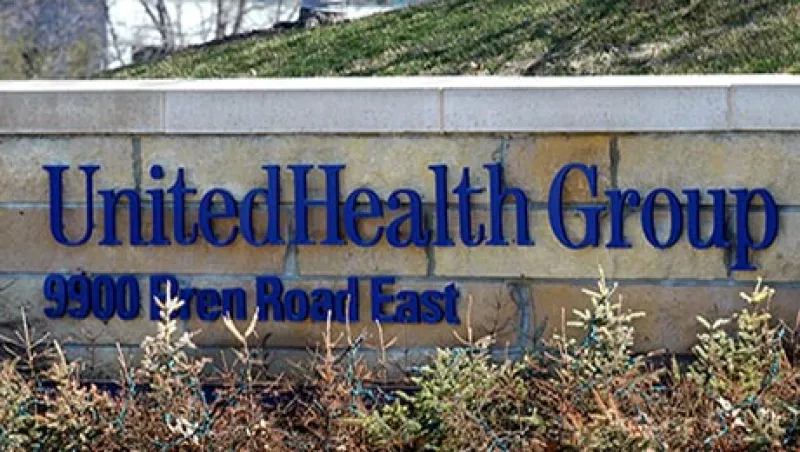
This is the sign outside the headquarters of UnitedHealth Group Inc., in Minnetonka, Minnesota, April 14, 2005. UnitedHealth Group Inc., the second- biggest U.S. health insurer, said first-quarter profit rose 41 percent as acquisitions added customers. The company raised its forecast for 2005. Photographer: Dawn Villella/Bloomberg News.
DAWN VILLELLA/BLOOMBERG NEWS

